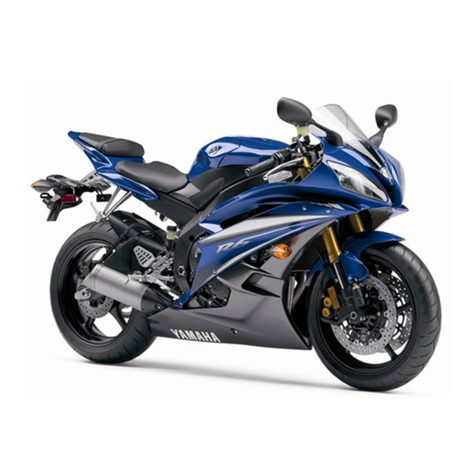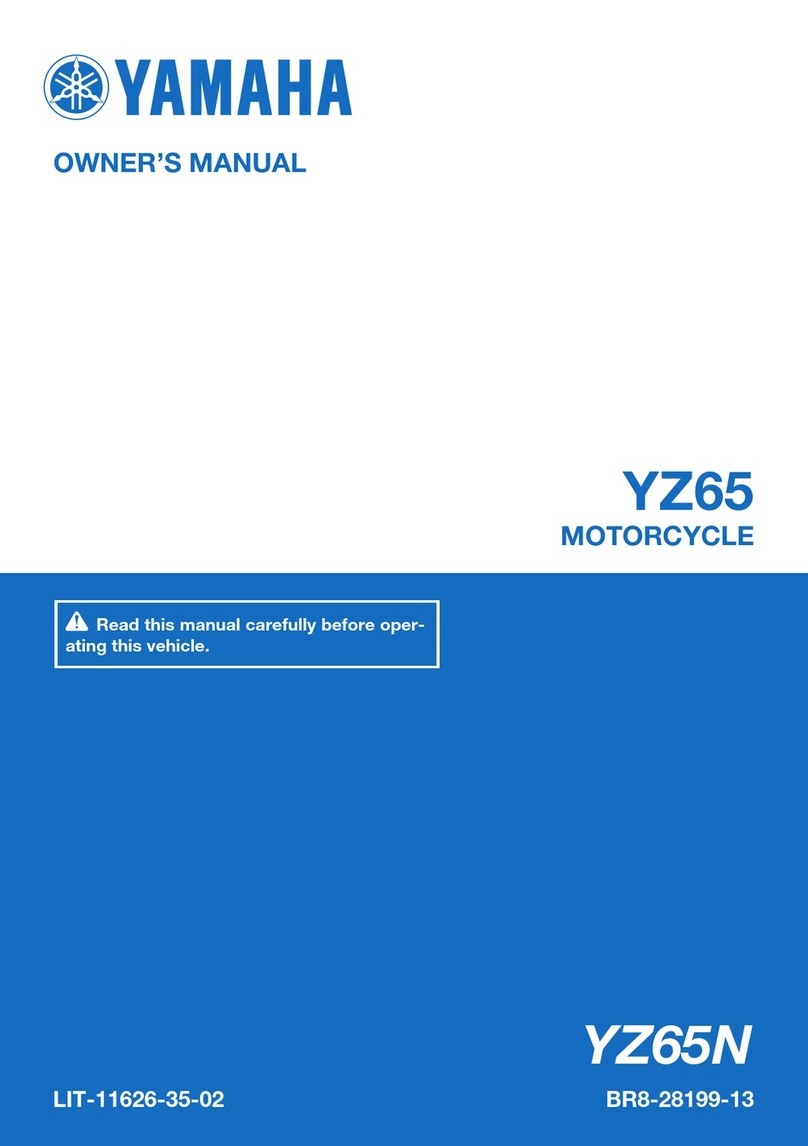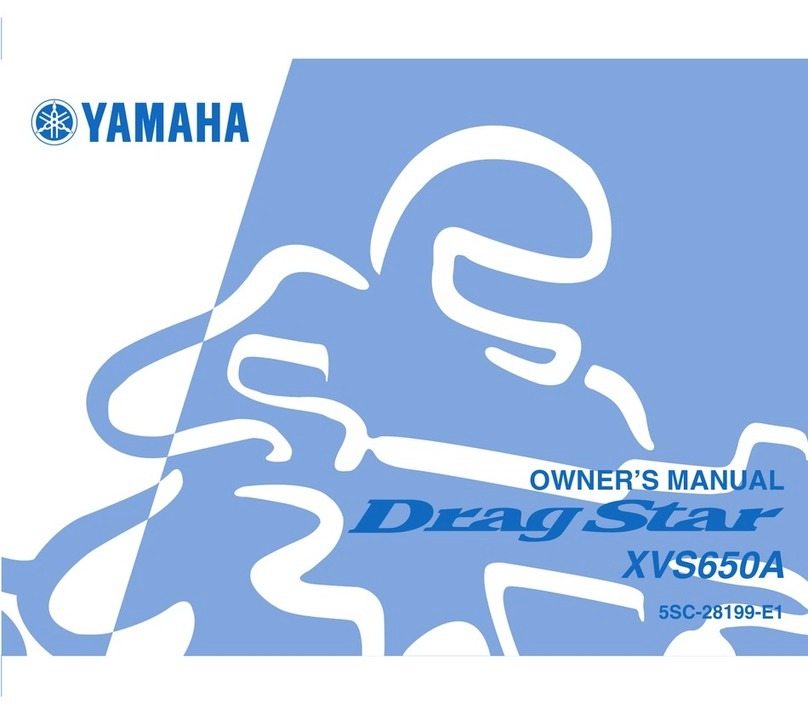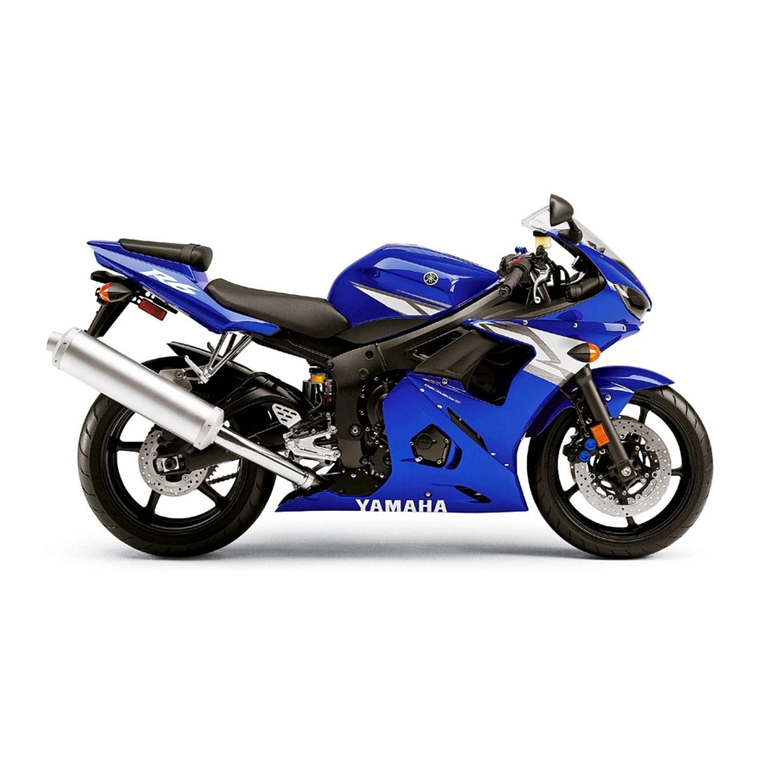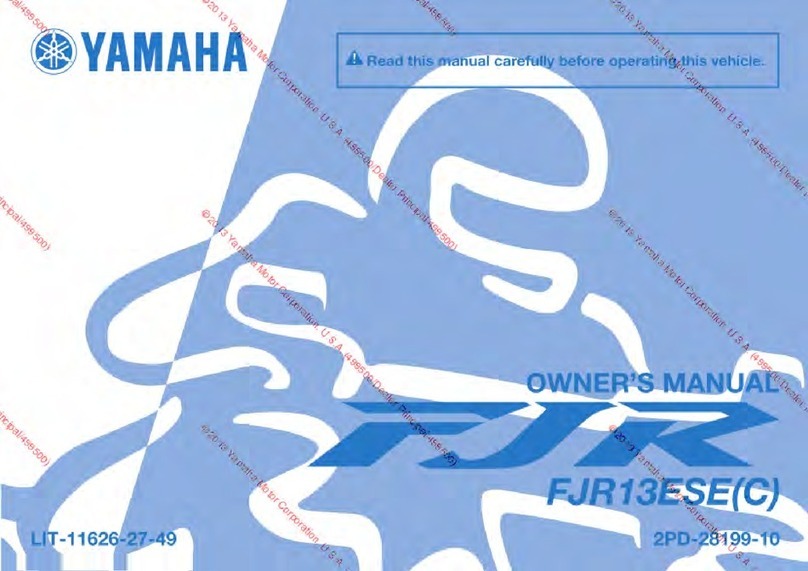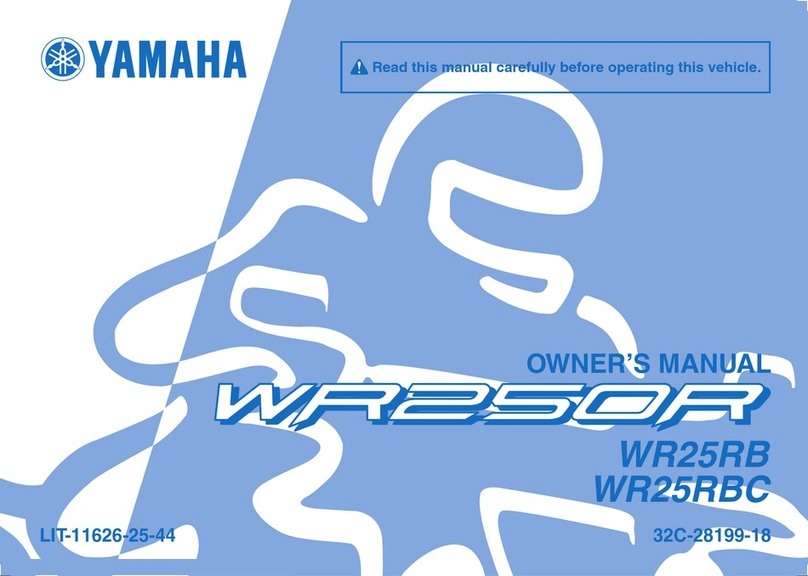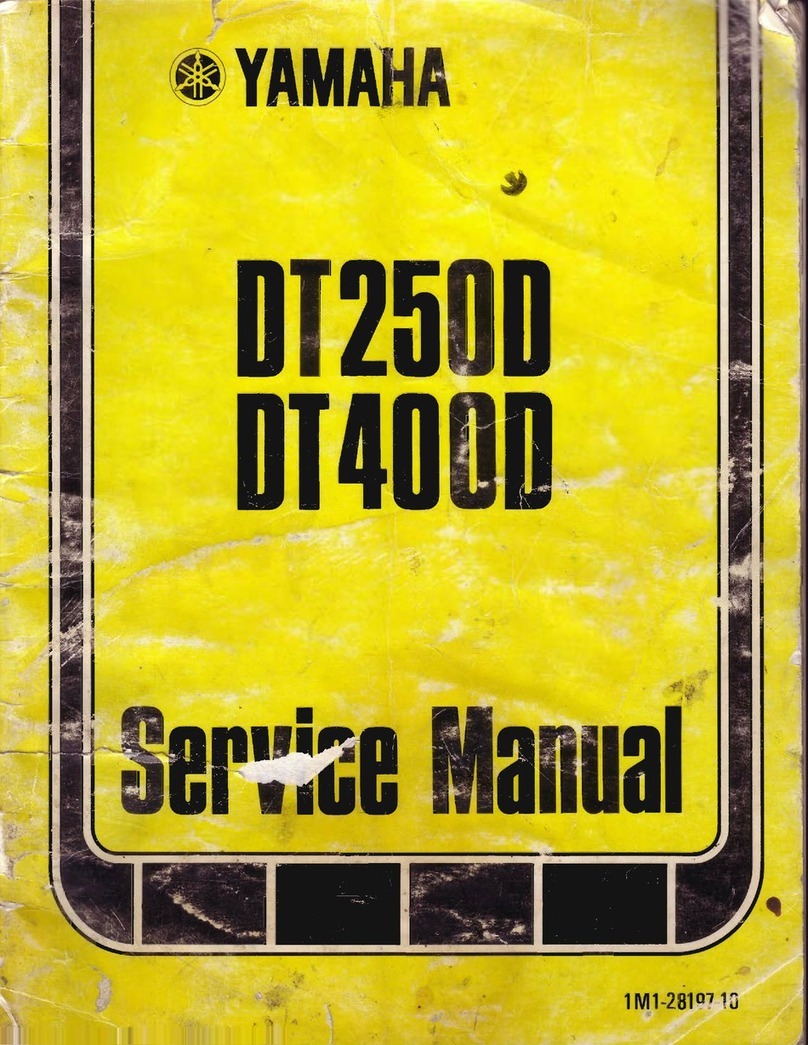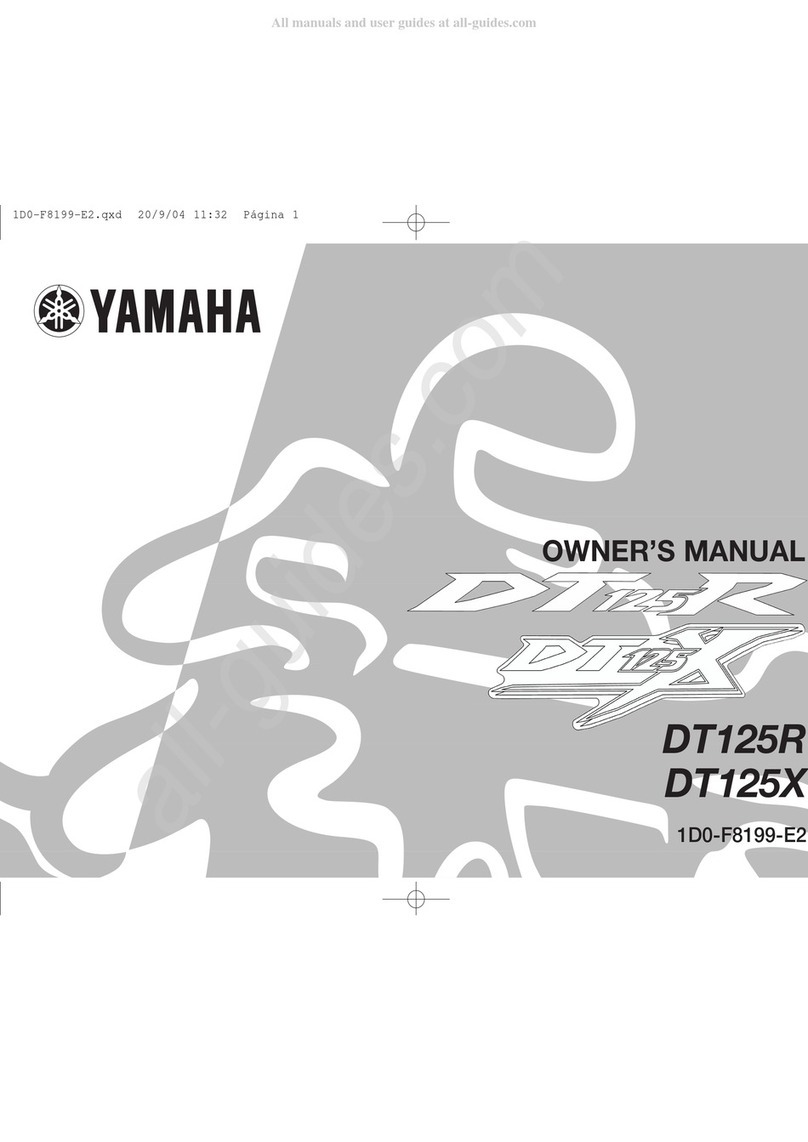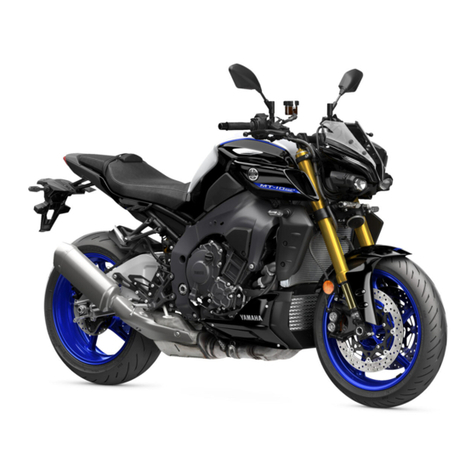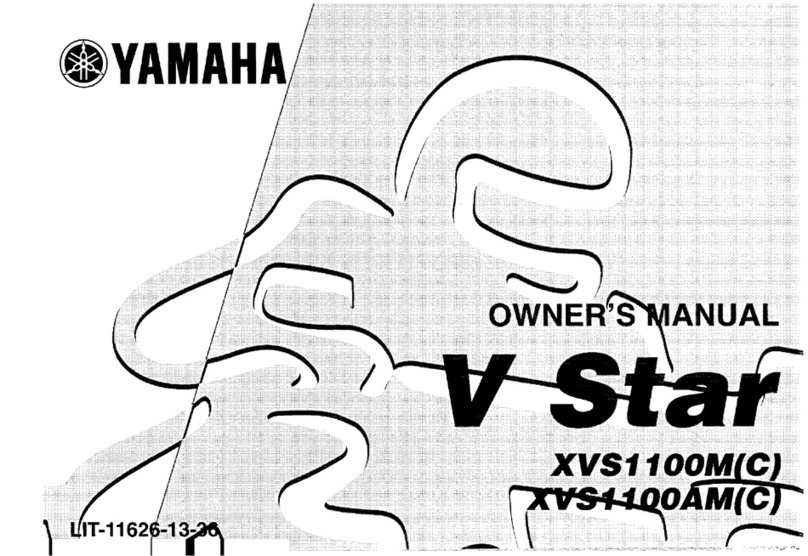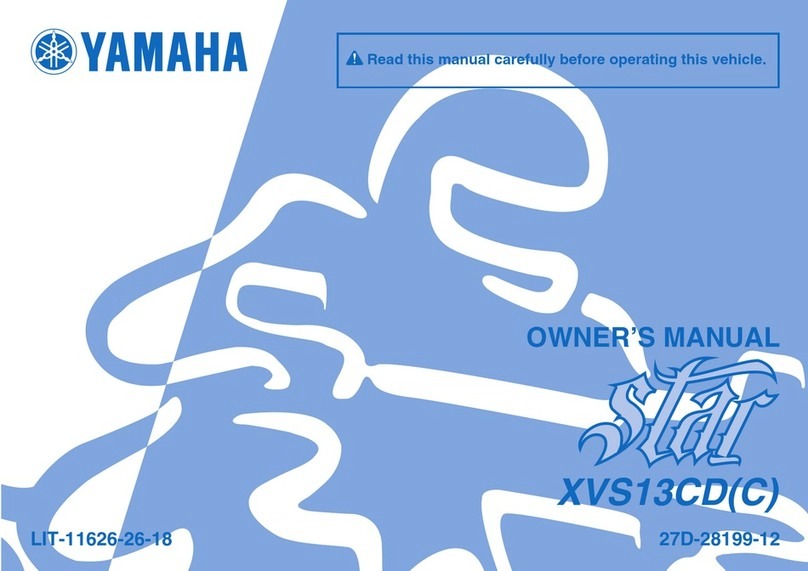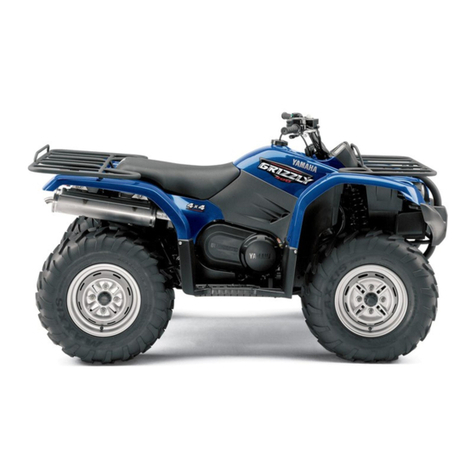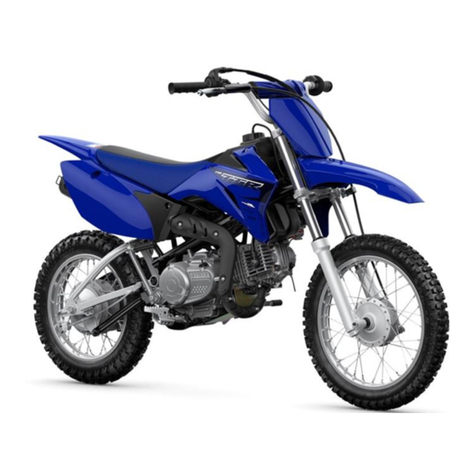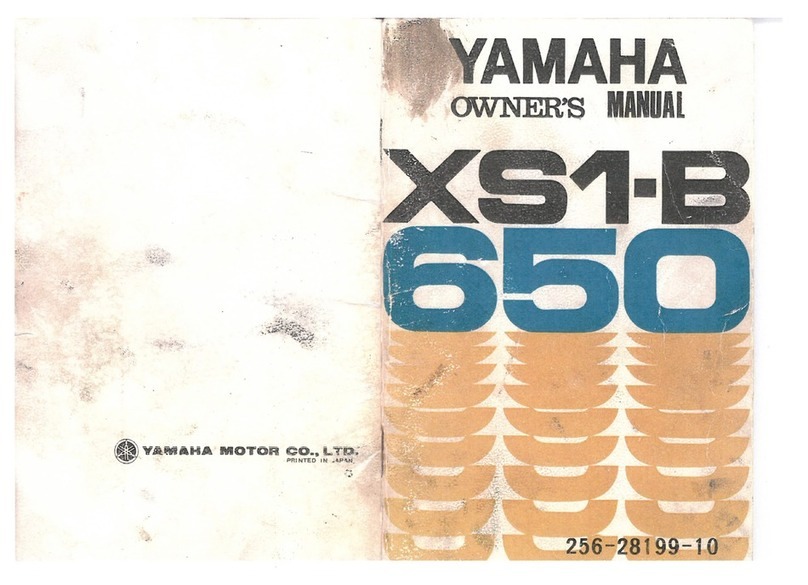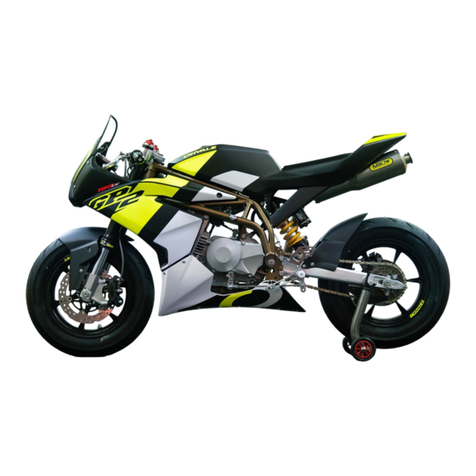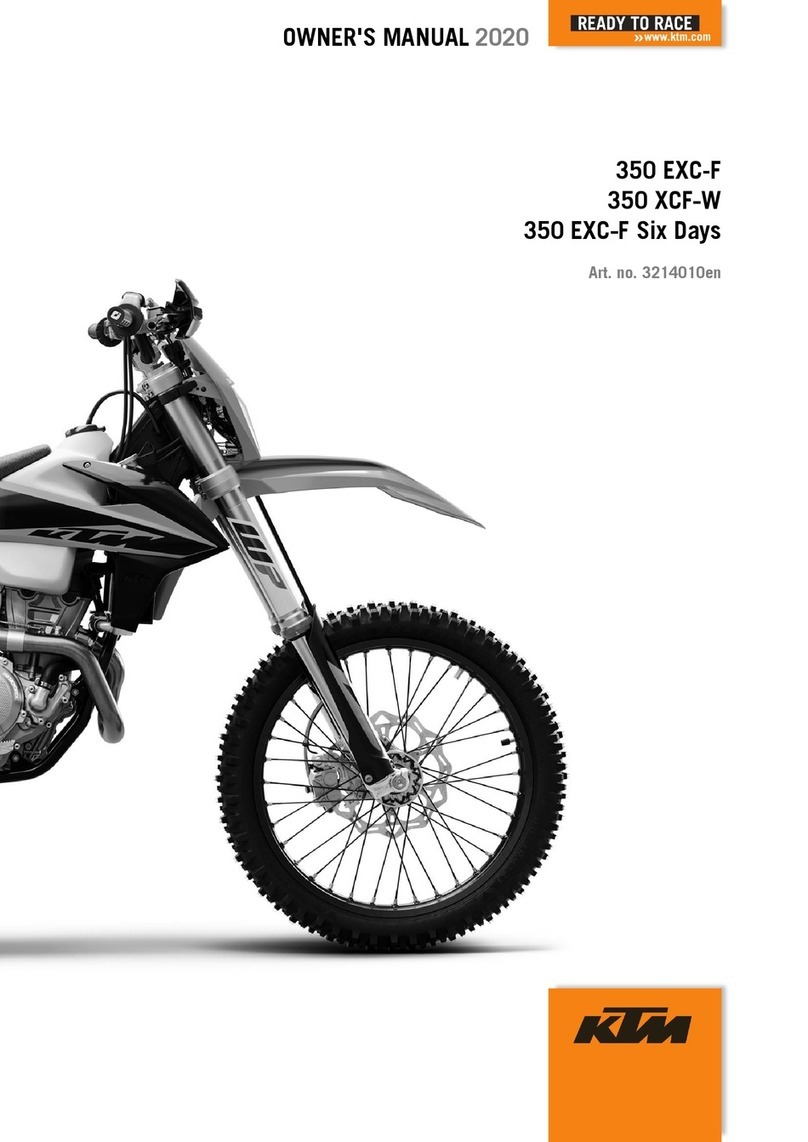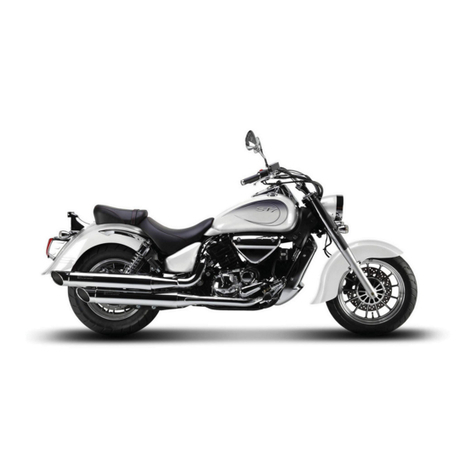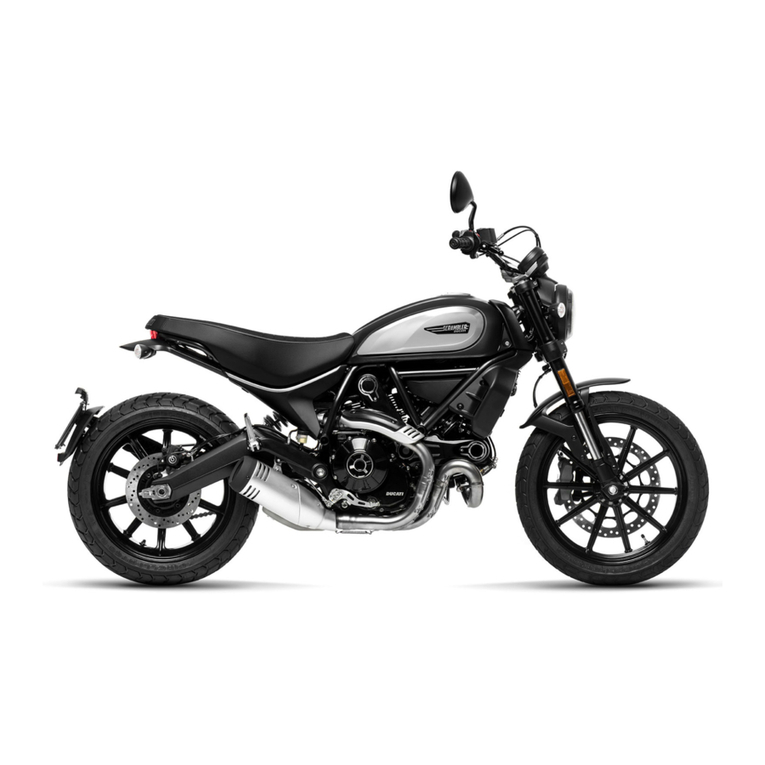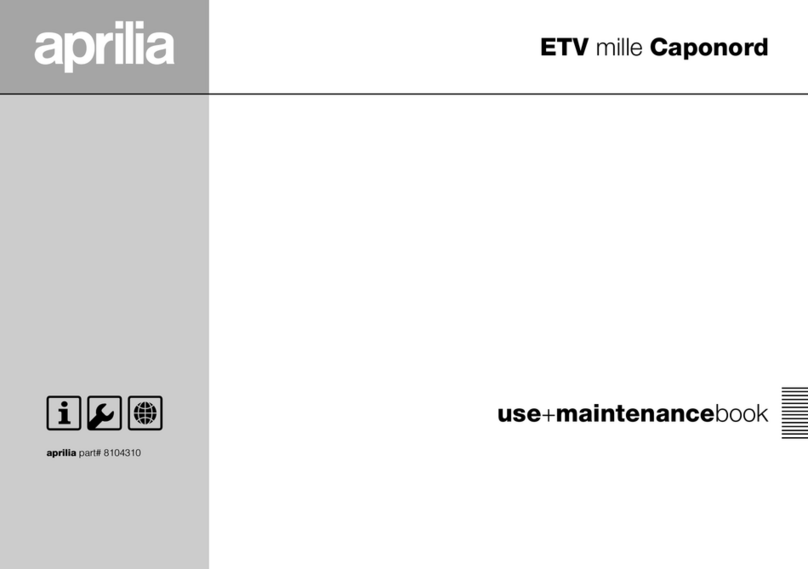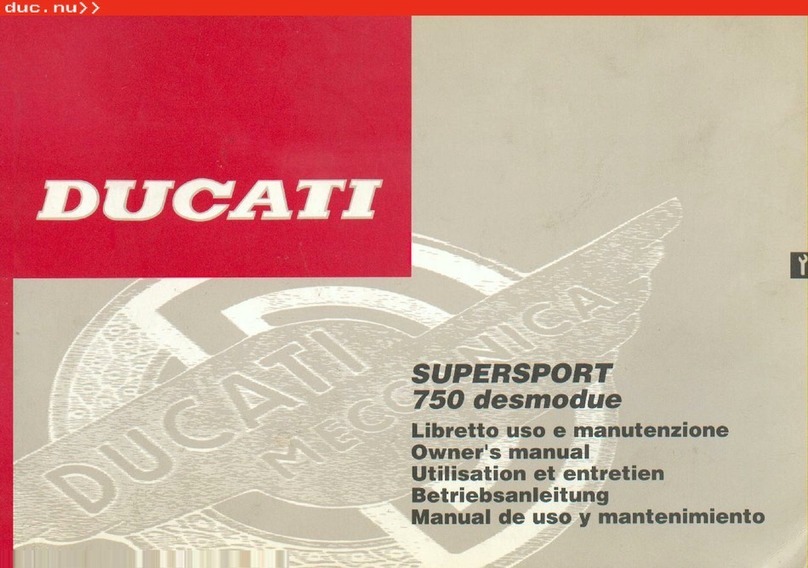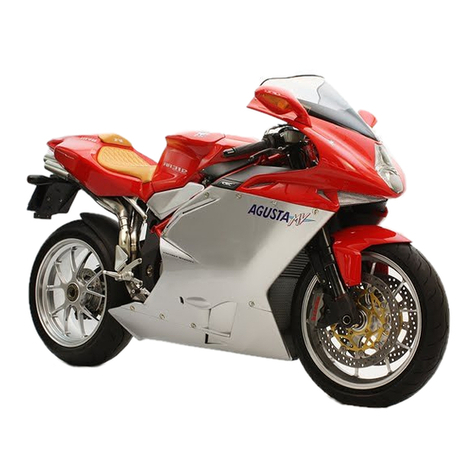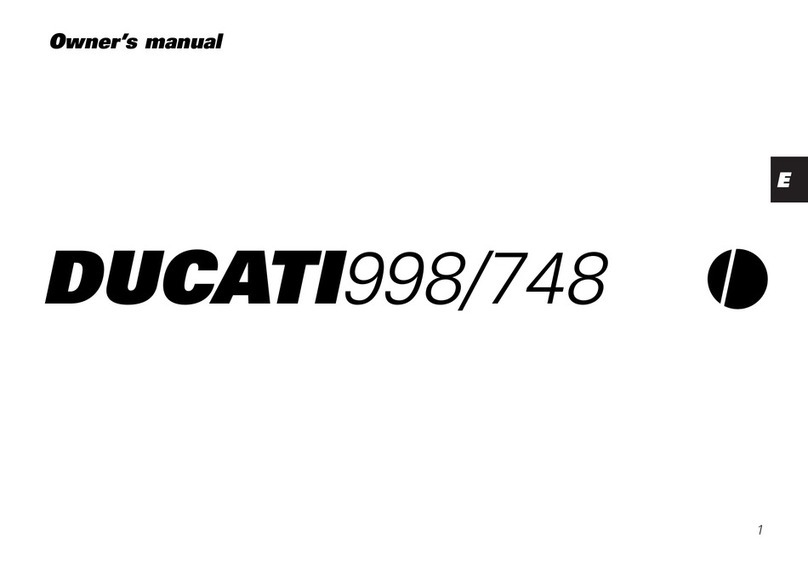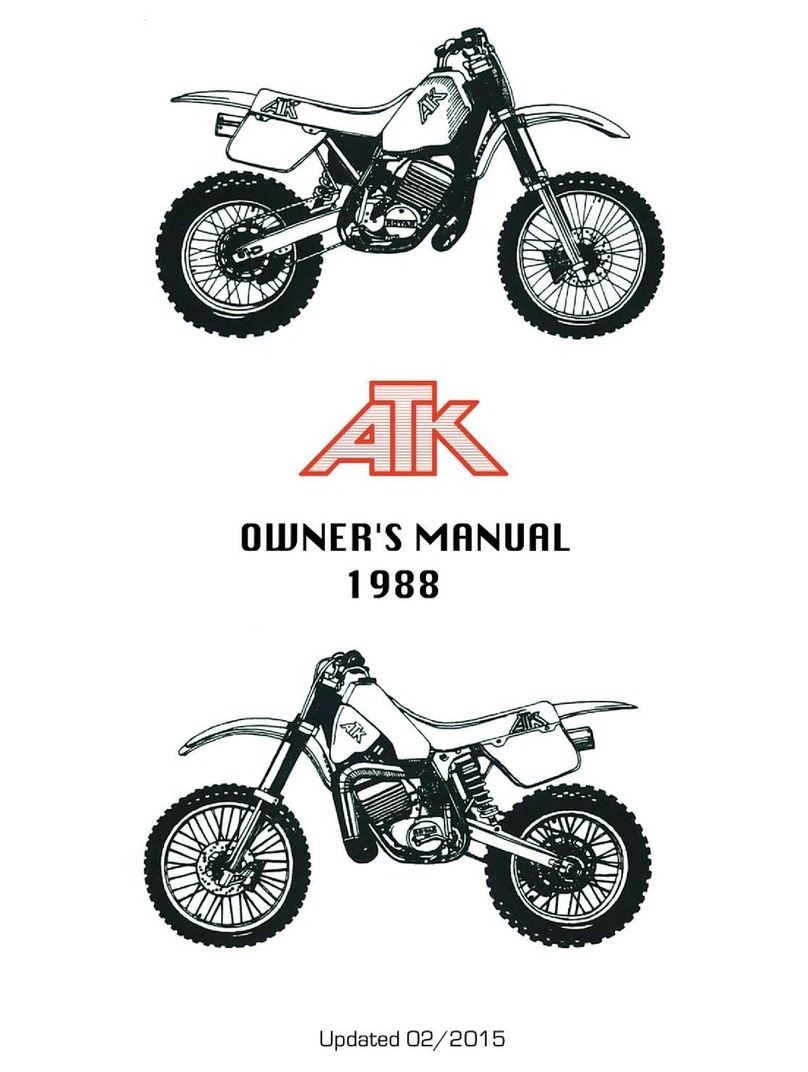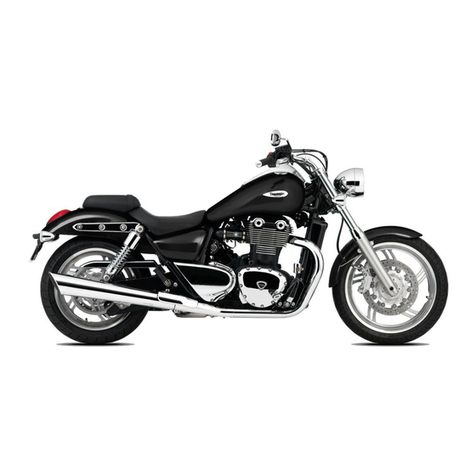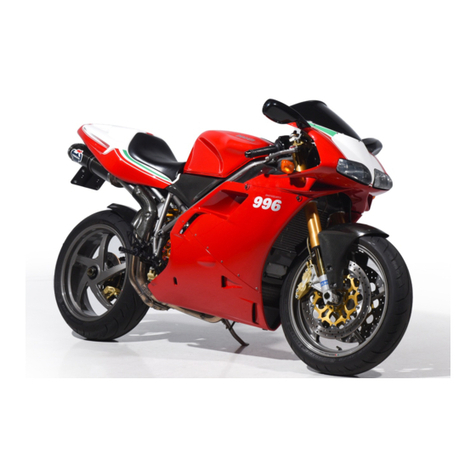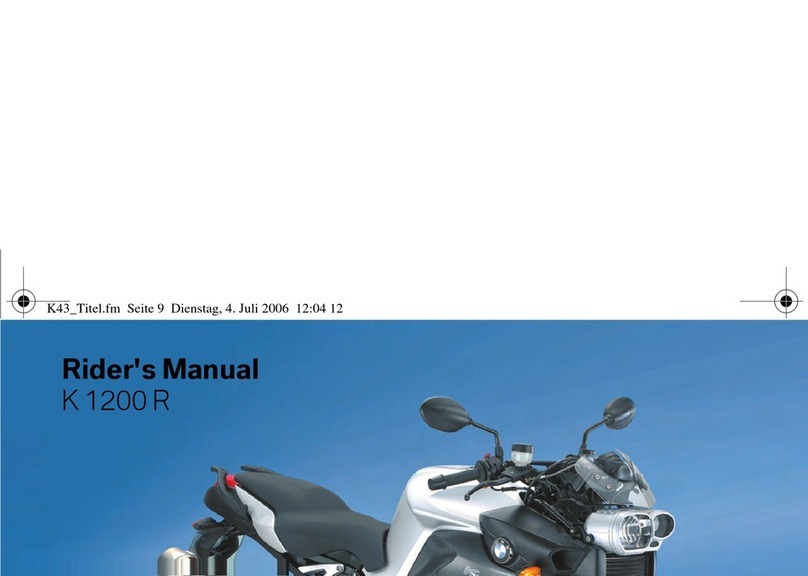
TABLE OF CONTENTS
LOCATION OF IMPORTANT
LABELS ............................................1-1
SAFETY INFORMATION ..................2-1
DESCRIPTION ..................................3-1
Left view ..........................................3-1
Right view........................................3-2
Controls and instruments ................3-3
INSTRUMENT AND CONTROL
FUNCTIONS.......................................4-1
Main switch .....................................4-1
Handlebar switches ........................4-1
Speed limiter ..................................4-2
Shift pedal ......................................4-3
Brake lever .....................................4-3
Brake pedal ....................................4-3
Fuel tank cap ..................................4-4
Fuel ................................................4-4
Fuel tank breather hose .................4-5
Fuel cock ........................................4-6
Starter (choke) lever .......................4-7
Seat ................................................4-7
Sidestand .......................................4-8
Starting circuit cut-off system .........4-8
FOR YOUR SAFETY –
PRE-OPERATION CHECKS ............. 5-1
OPERATION AND IMPORTANT
RIDING POINTS ................................ 6-1
Starting and warming up a cold
engine ......................................... 6-1
Starting a warm engine .................. 6-2
Shifting ........................................... 6-2
Engine break-in .............................. 6-3
Parking ........................................... 6-4
PERIODIC MAINTENANCE AND
ADJUSTMENT................................... 7-1
Periodic maintenance chart for the
emission control system ............. 7-2
General maintenance and
lubrication chart .......................... 7-3
Checking the spark plug ................ 7-6
Engine oil ....................................... 7-7
Cleaning the air filter element ........ 7-8
Cleaning the spark arrester ......... 7-10
Adjusting the carburetor ............... 7-11
Adjusting the engine idling
speed ........................................ 7-11
Checking the throttle grip free
play ........................................... 7-12
Valve clearance ........................... 7-12
Tires ............................................. 7-13
Spoke wheels .............................. 7-14
Adjusting the clutch free play ....... 7-14
Adjusting the brake lever free
play ........................................... 7-15
Adjusting the brake pedal free
play ........................................... 7-16
Checking the shift pedal ...............7-16
Checking the front and rear brake
shoes ........................................ 7-17
Drive chain slack .......................... 7-17
Cleaning and lubricating the drive
chain ......................................... 7-19
Checking and lubricating the
cables ....................................... 7-19
Checking and lubricating the
throttle grip and cable ............... 7-20
Checking and lubricating the
brake lever ................................ 7-20
Checking and lubricating the
brake pedal ............................... 7-20
Checking and lubricating the
sidestand .................................. 7-21
Lubricating the swingarm pivots ... 7-21
Checking the front fork ................. 7-21
Checking the steering .................. 7-22
Checking the wheel bearings ....... 7-22
Battery .......................................... 7-23
Replacing the fuse ....................... 7-24
Supporting the motorcycle ........... 7-25
Front wheel .................................. 7-26
Rear wheel ................................... 7-27
Troubleshooting ........................... 7-29
Troubleshooting chart ..................7-30
U1P617E0.book Page 1 Monday, April 11, 2011 8:07 PM
